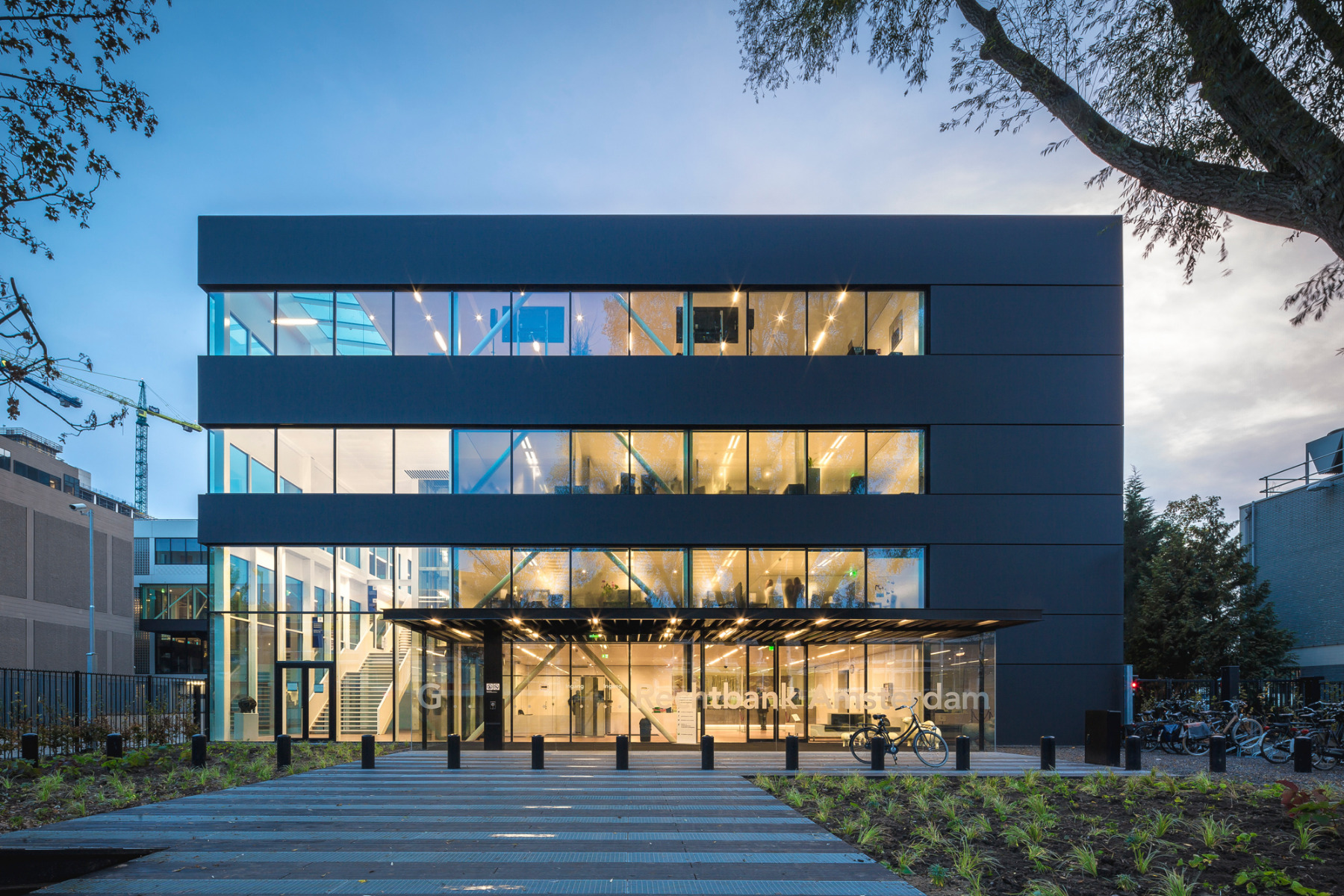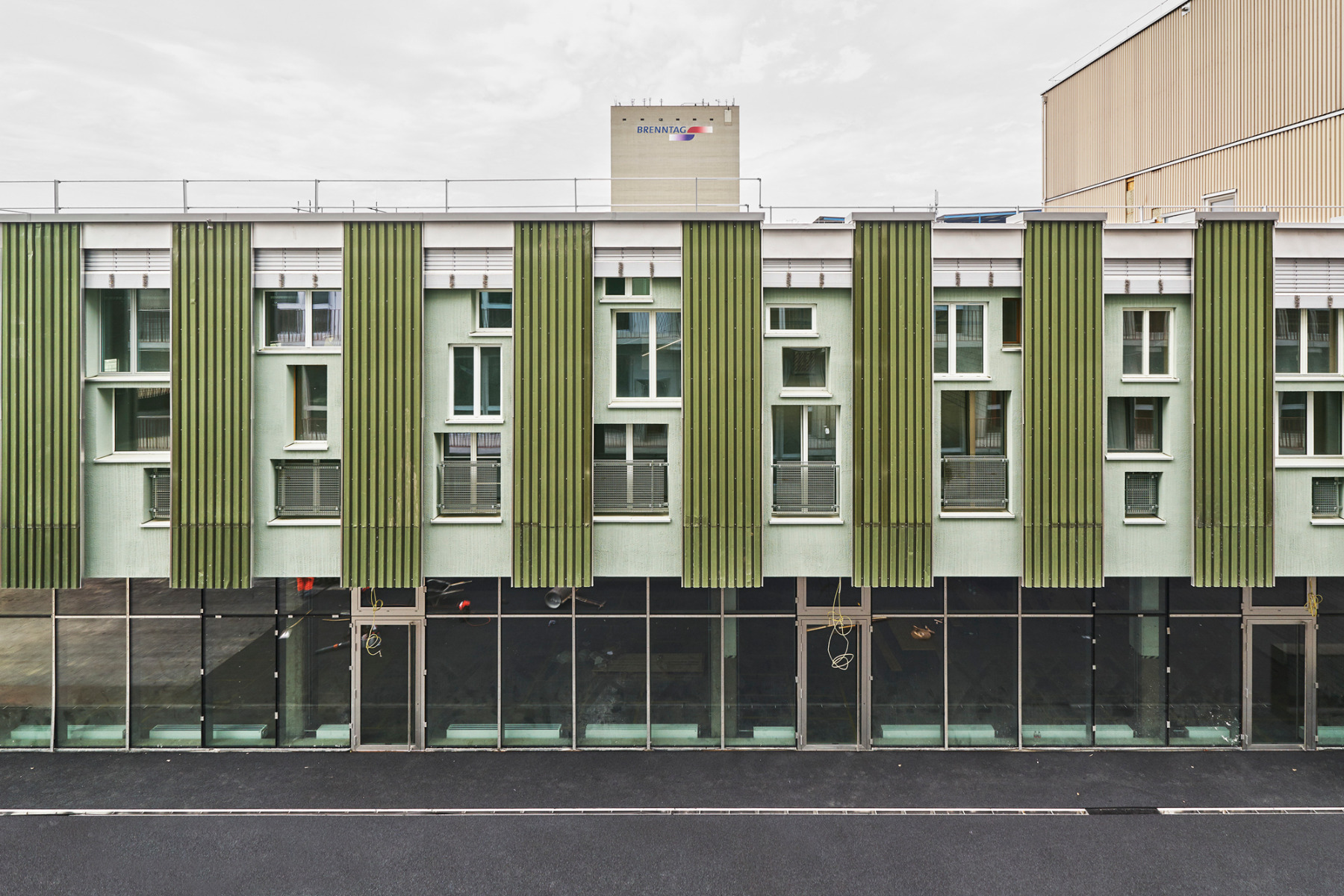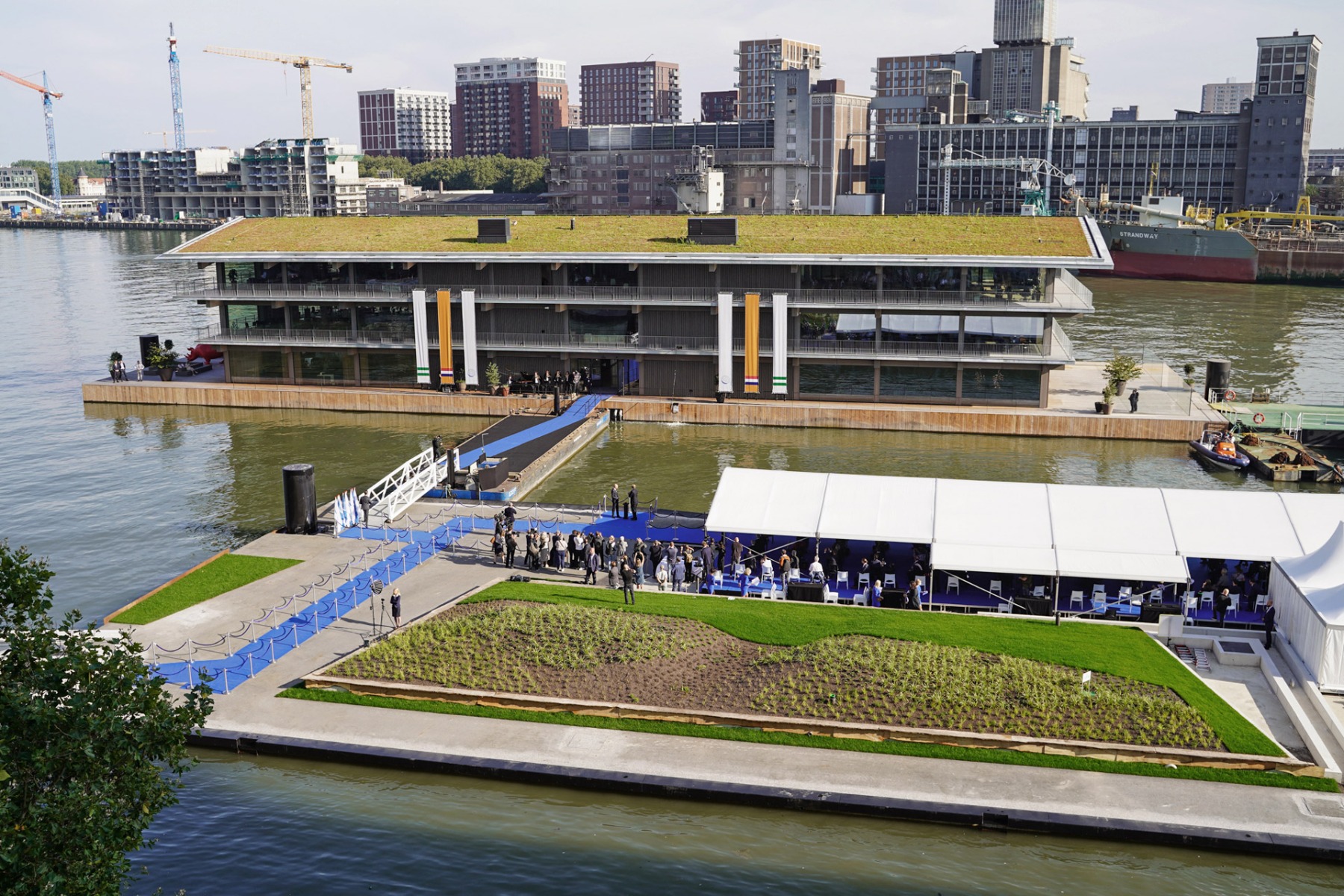Reuse Building Materials
If the aim is net zero, demolition and landfill disposal must be avoided at all costs. Today, a progressive architecture is one that takes part in the circular economy and reuses building materials. This issue presents buildings designed with this in mind: Powerhouse Company’s Floating Office in Rotterdam can be moved as a whole or disassembled into reusable elements. In Basel, Baubüro In Situ mainly used recycled building components to refurbish and extend the Elys cultural and commercial building. In Amsterdam, Cepezed designed a temporary court-house whose dismantling and relocation were planned from the outset. Our special Green section rounds out this look at the circular economy by addressing buildings’ energy consumption. Enjoy the issue! Sandra Hofmeister




More stories to the current issue
-

Mud bricks from the excavation pit
School Building in Geneva by David Reffo
A new school building has been erected in Geneva's Parc Geisendorf, using material from the construction pit to make mud bricks for the load-bearing walls.
-

Building blocks in XXL
Dismountable Courthouse by Cepezed
The individual components of the building conceived by Cepezed for the district court in Amsterdam are currently being kept in a storage hall.
-

Used building components
Elys Cultural and Commercial Building by Baubüro In Situ
For the Elys cultural and commercial building in Basel's Lysbüchel district, Baubüro in situ had the approx. 1000 m2 wood-framed facade mainly built out of used building components.
-

Circular economy
Reuse Building Materials – Editorial Detail 11.2022
New builds are no longer in keeping with the times. Instead, we need to ask how we can use existing building stock as a resource, reusing bricks, windows, or facade pieces. If the aim is net zero, demolition and landfill disposal must be avoided at all costs. Today, a progressive architecture is one that takes part in the circular economy and reuses building materials.
-

Exhibition at DAM Architecture Museum
Adaptive Architecture – Building upon the Existing
At its interim location in DAM Ostend, the German Architecture Museum Frankfurt is showcasing ingenious and creative strategies for dealing with existing architecture.
-

Workplace on the water
Floating Office Rotterdam by Powerhouse Company
Demantable, energy-independent, water-borne – the office boat at the port of Rotterdam by Powerhouse Company sets standards in climate protection and climate adaptation.
Previous Issues
-

Lighting Interiors 10.2022
Our October issue is all about light and interiors. PPAG’s school in Vienna brings daylight into deep cluster spaces to foster daily well-being.
-

Cultural Buildings 9.2022
In 1997, the Guggenheim Museum opened in Bilbao, and Frank Gehry’s eccentric new building transformed the Basque city into an overnight hotspot for international tourism.
-

Urban Green 7/8.2022
Especially in big dense cities, roofs and facades are the only places left to make things greener.
-

Simple and Affordable 6.2022
“Doing away with everything superfluous creates the potential for an architectural quality all of its own,” says Florian Nagler about “simple building” in an interview with Frank Kaltenbach.
-

Prefabrication Modular Construction 5.2022
Naturstein und Hochlochziegel, Ortbeton und Stampflehm in vorproduzierten Elementen: Für die Massivbauweise kommen viele unterschiedliche Materialien in Frage, und oft ist ihre Anwendung regional motiviert.
-

Solid Construction 4.2022
Natural stone and perforated bricks, cast-in-place concrete, and rammed earth in prefabricated elements – these are just a few of the diverse materials used in solid construction, and their use is often regionally motivated.
-

Urban Housing 3.2022
“A villa in the countryside with a large terrace, in front of you the Baltic Sea, Friedrichstrasse behind you …”. Thus begins Kurt Tucholsky’s 1927 poem, “The Ideal”. While Tucholsky’s ideal of urban life might be unattainable in Berlin, there are cities where it has become a reality.


